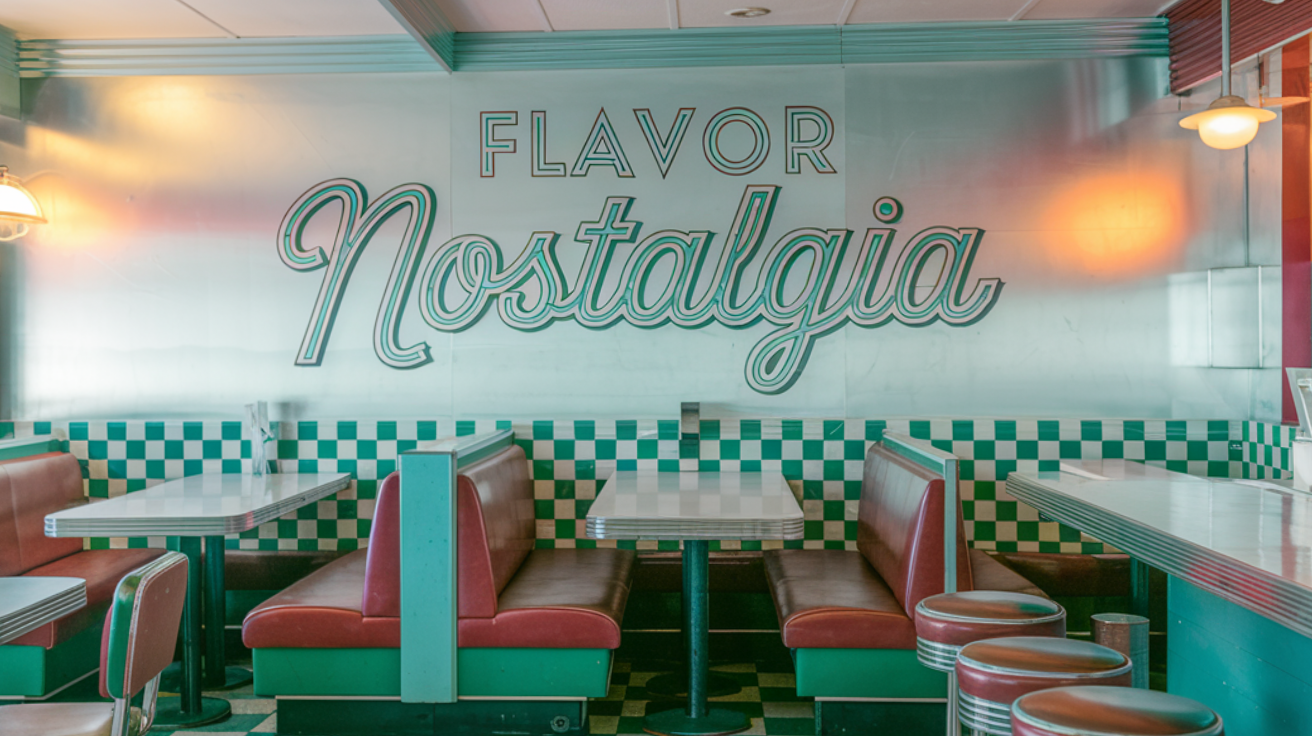
Food is much more than just sustenance; it’s a powerful connector to our past, a vehicle that can transport us back to moments of comfort, love, and simplicity. This deep emotional connection to food is often referred to as “flavor nostalgia”—a yearning for the tastes of our childhood that bring us back to the people, places, and times that shaped who we are today.
Our brains are hardwired to associate tastes and smells with memories. This is because the regions responsible for processing these senses—the amygdala and hippocampus—are closely linked to our memory centers. When you bite into a food that was part of your childhood, like a warm chocolate chip cookie or a bowl of mac and cheese, your brain immediately taps into the emotional and sensory experiences tied to that food. This is why a single taste or smell can evoke vivid recollections of the past, often accompanied by a flood of emotions.
This phenomenon is not just a quirk of memory but a crucial part of how we navigate our lives. The foods we loved as children often become our comfort foods as adults, the dishes we turn to when we need to feel grounded and connected to our roots. The nostalgia tied to these foods can provide a sense of stability and continuity in an ever-changing world.
Food plays a unique role in our emotional lives. As children, many of our happiest moments are centered around meals shared with family and friends. Whether it was a weekly family dinner, a holiday feast, or a simple treat after school, these experiences are deeply ingrained in our memories. The foods we associate with these moments become symbols of love, care, and connection.
For many, these foods are not just about the taste; they are about the memories of who prepared them, where they were eaten, and the emotions felt at that time. For example, a simple dish like a grilled cheese sandwich might remind someone of their grandmother who made it for them every Sunday afternoon. The act of recreating these dishes as adults allows us to reconnect with those who may no longer be with us and to relive those precious moments.
Flavor nostalgia is also closely tied to cultural and regional identities. Each culture has its own set of traditional dishes that are passed down through generations. These recipes often carry with them the stories and traditions of our ancestors, making them an essential part of our heritage. When we cook these dishes, we are not just preparing a meal; we are honoring our cultural roots and keeping the memories of our loved ones alive.
For example, someone from an Italian-American family might find deep comfort in a plate of homemade lasagna, not just because of its taste, but because it reminds them of family gatherings and the warmth of their grandmother’s kitchen. The process of preparing these dishes, often learned through observation rather than written recipes, is a nostalgic journey connecting us with our past.
Marketers are keenly aware of the power of nostalgia. Many brands have successfully tapped into our collective memories to create compelling advertising campaigns. By reviving retro flavors and packaging, companies can evoke feelings of nostalgia, making their products more appealing. This strategy is particularly effective because it not only reminds consumers of their childhood but also creates a sense of trust and familiarity with the brand.
The resurgence of retro flavors in today’s food trends is a testament to how powerful this connection can be. Foods like classic sodas, vintage candies, and old-school cereals are making a comeback as people seek to recapture the simple pleasures of their youth. This trend reflects a broader cultural desire to reconnect with the past, especially in uncertain times.
While flavor nostalgia is about reconnecting with the past, it also plays a role in how we create new memories. As adults, when we prepare and share these nostalgic dishes with our own families, we are not only reliving our memories but also creating new ones. These moments become part of the next generation’s memories, ensuring that the legacy of these foods continues.
Flavor nostalgia is a powerful force that connects us to our past and helps us navigate the present. Whether the comfort of a familiar taste or the joy of sharing a cherished recipe with loved ones, these nostalgic foods remind us of who we are and where we come from. They are more than just meals; they are links to our history, our culture, and our emotions.
Contact us at americas@aromatechus.com to learn more about our flavoring solutions.